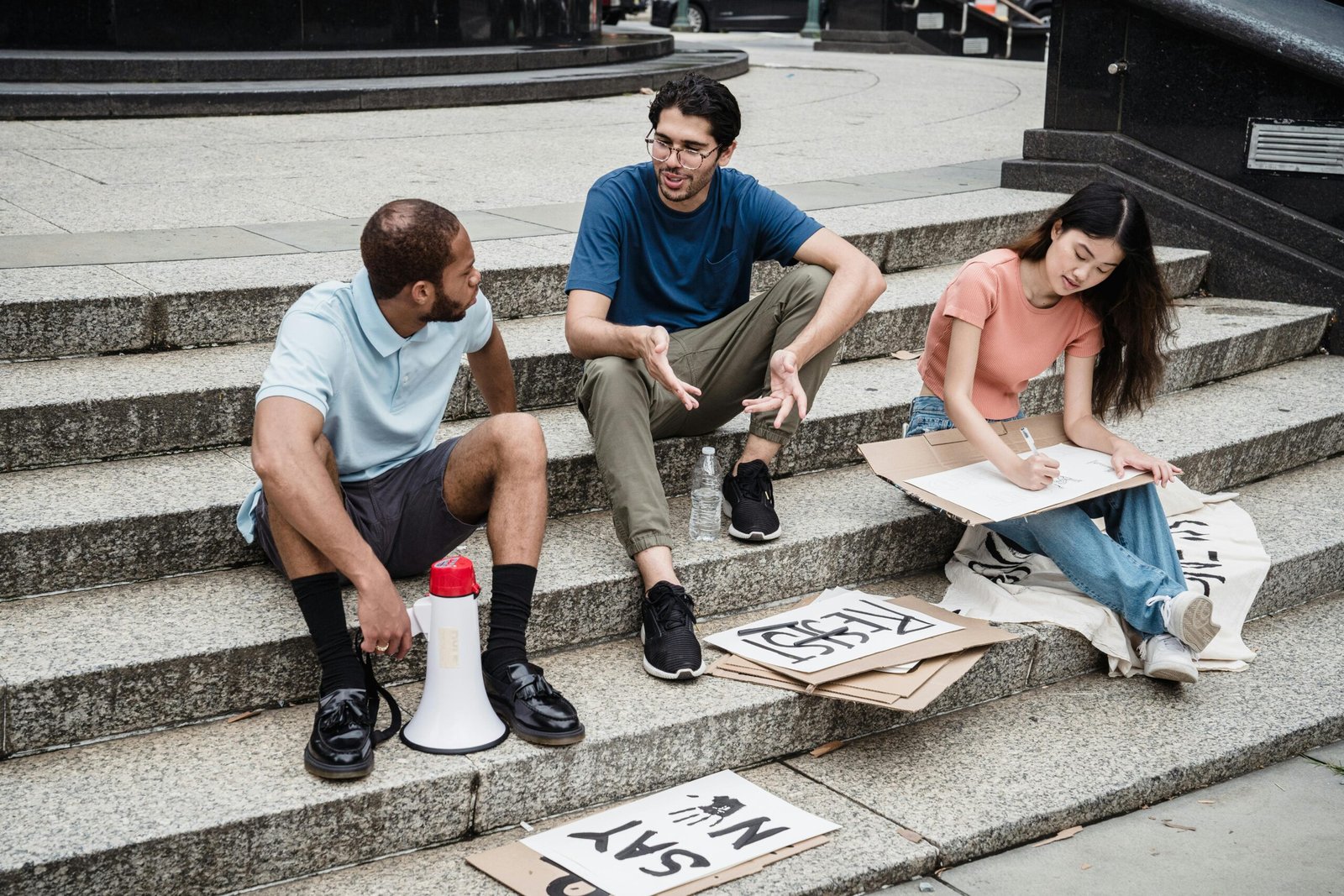A framework like this helps us anchor our public engagement strategies in trust, empathy, and cultural awareness, ensuring that we are not just informing people, but reaching them in ways that resonate and empower.
Introduction
The Rhema Multicultural Center (RMC) recognizes the imperative of proactive risk communication. To combat the risks of social inertia, depression, isolation and other mental health hazards faced by many newcomers to Canada, RMC has developed a Strategic Risk Communications Framework. This paper explores RMC’s innovative strategies for public engagement and its multifaceted evaluation methods. This paper offers insights into strategies that foster meaningful public involvement and stakeholder participation. The center has strategically integrated various techniques, ranging from co-creation initiatives to social media engagement, to creating a dialogue that empowers, informs, and encourages action.
Rhema Multicultural Center’s Strategic Risk Communications Framework is committed to proactively educating newcomers on the pervasive risk of mental illness so that the hazard can be circumvented. To further the team’s agenda, the Strategic Risk Communications team will design integration campaigns to combat social inertia, depression and mental vulnerability in immigrants.
PUBLIC ENGAGEMENT STRATEGIES
Risk communication, by nature, is centered around the public, hence, public engagement is a core factor in planning for successful outcomes. The framework must include practical strategies to encourage public involvement and promote stakeholder engagement. For instance, Rhema Multicultural Center will adopt co-creation as a technique to rouse public interest and engender public participation. Since one of our key risk communications campaign strategies is emphasizing shared experiences through storytelling, the center will accept volunteers who have stories to tell. Other public engagement strategies will include:
Social media marketing – If executed strategically, social media marketing will create a dynamic and interactive relationship between the center and its stakeholders. The Strategic Risk Communications Team hopes to foster a sense of interaction and engagement and social media platform is a great avenue to achieve this goal. Stakeholders can leave comments, ask questions, and provide feedback, while the team members can respond promptly. Social media is great for addressing concerns, providing accurate information, and managing public perception effectively.
Contests, challenges, and hashtags can motivate users to share their experiences and opinions, creating a sense of community and participation. For instance, inviting stakeholders to upload videos of their integration activities can enhance a positive disposition to the agenda.
Information Kits – RMC aims to use information kits to engender clear communication, consistency, and accountability. Tools like facts and myth sheets, fliers, brochures and newsletters will help bridge the gap between experts and the stakeholders. By providing accurate, understandable, and actionable information, information kits will empower stakeholders to make informed decisions.
Focus Groups
Rhema Multicultural center will engage the public using focus groups. We believe this will promote trust and create a buzz within the closely knit community because risk is a hot topic. Perspectives from focus groups also helps communicators track shifts in public perception, understanding, and concerns. This allows for continuous refinement of communication strategies to meet evolving needs. Involving our stakeholders in discussions about risk empowers them to take ownership of their own decisions and actions. Listening to participants’ discussions, communicators can identify key phrases, analogies, and language that resonate with the public.
Outreaches
It is customary for RMC to organize outreach programs as it is an effective way to actively engage the public. Workshops, seminars, webinars, and community events focused on risk education will be used as a public engagement strategy.
EVALUATION METHODS
Evaluation is critical to assessing the effectiveness of the Center’s Strategic Risk Communications Framework. With evaluations, results can be measured to elicit more strategies, refine or modify message design and replace ineffective ones based on feedback.
Research is a major component of evaluation. The Rhema Multicultural center will benefit from an effects-centric approach. The effect-centric research method provides a unique opportunity to zoom in on the effect of the risk communications framework and the key messages on stakeholders.
The Strategic Risk Framework evaluation also leans towards a qualitative method to evaluate the effectiveness of the content and messages framed for the risk communications campaign. The qualitative approach measures the extent to which emotion is emphasized in a story and this will be handy in evaluating the storytelling component of the communications campaign. The Strategic Communications Team will adopt other methods listed below.
Evaluative assertion analysis – Since this analytic approach entails distilling messages into clear summaries, the Strategic Risk Communications Team will benefit from this approach by summarizing communications materials (news release, brochures, flyers etc) to determine if contents released during the campaign embodied the key messages identified in the Strategic Risk Communications Framework. Sorting the materials with the best engagements can lead the team to the key messages that resonate better with stakeholders.
Discourse Analysis – This approach is perhaps one of the most important methods for evaluating the adaptation of the Strategic risk communications framework. One of the goals of the Rhema Multicultural Center’s strategic risk communication campaign is to create awareness, open up a two-way conversation about the hazards of mental illness and strongly advocate for the promotion of deliberate integration strategies that can improve the lives and social wellbeing of new immigrants to Canada. To evaluate conversations and feedback on communication efforts on the subject, conversations in the comment section of social media ads and posts will be analyzed to determine perception and the level of receptiveness of stakeholders. Program advisors who interface with stakeholders frequently can also have series of their non-formal discussions collected and evaluated to determine if there is a change in attitude or perception since the risk communications campaign was launched. A thorough analysis of these conversational discourses will provide an insight to the extent to which the risk communications efforts have impacted, or failed to impact stakeholders.
Polling
RMC will utilize polling as an evaluation tool. Polls quickly capture public opinions, allow for comparisons, and track changes over time. Structured close ended questionnaires answered by a pool of stakeholders can be used for a quantitative measurement of the risk communications outcome.
Conclusion
The Rhema Multicultural Center’s proactive risk communication framework, coupled with innovative public engagement strategies, promises a future where mental health risks among newcomers are proactively prevented and effectively addressed. The integration of diverse evaluation methods further ensures the framework’s impact. We envision positive outcomes through active public engagement, evaluation and re-evaluation of risk communications strategic plans.



